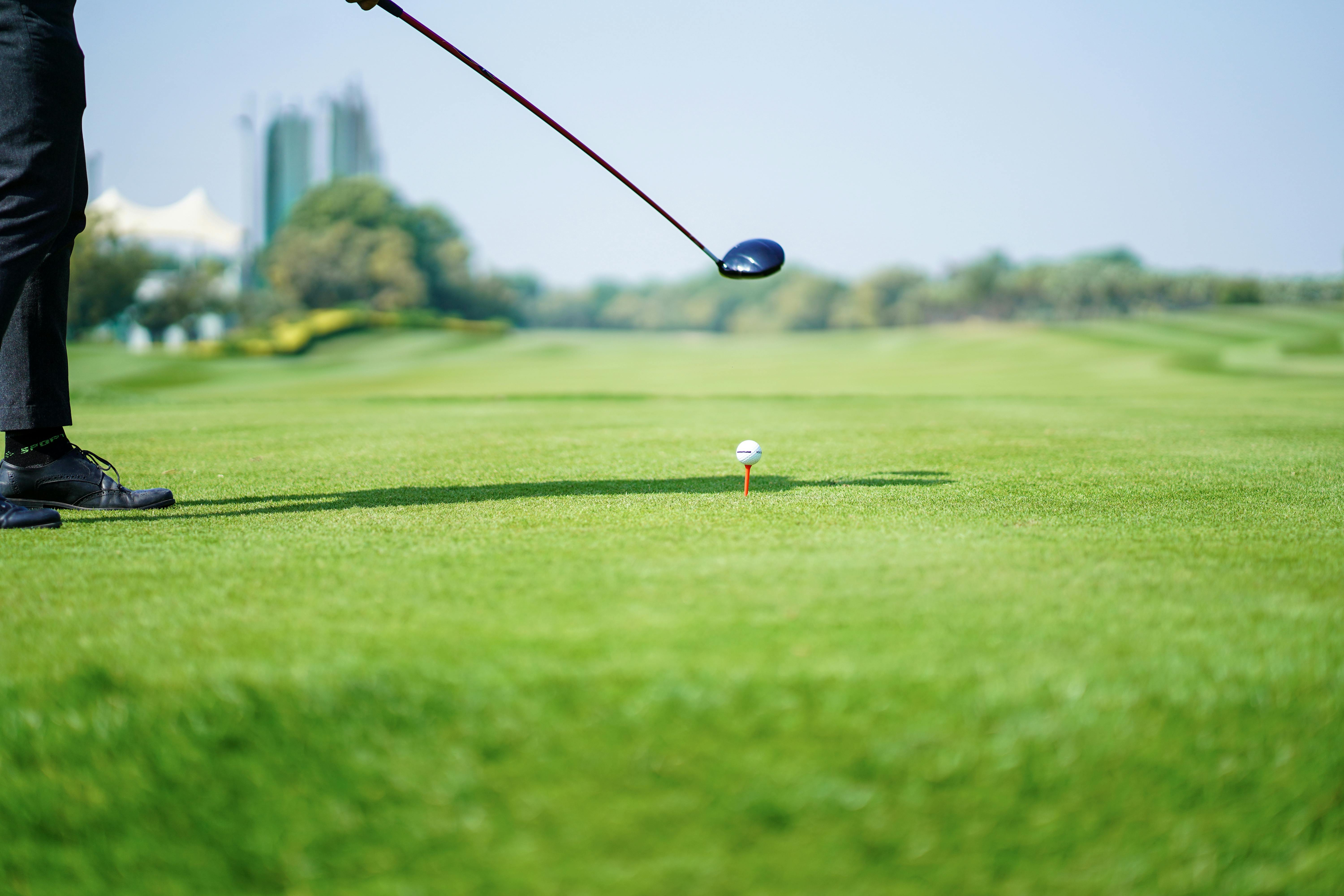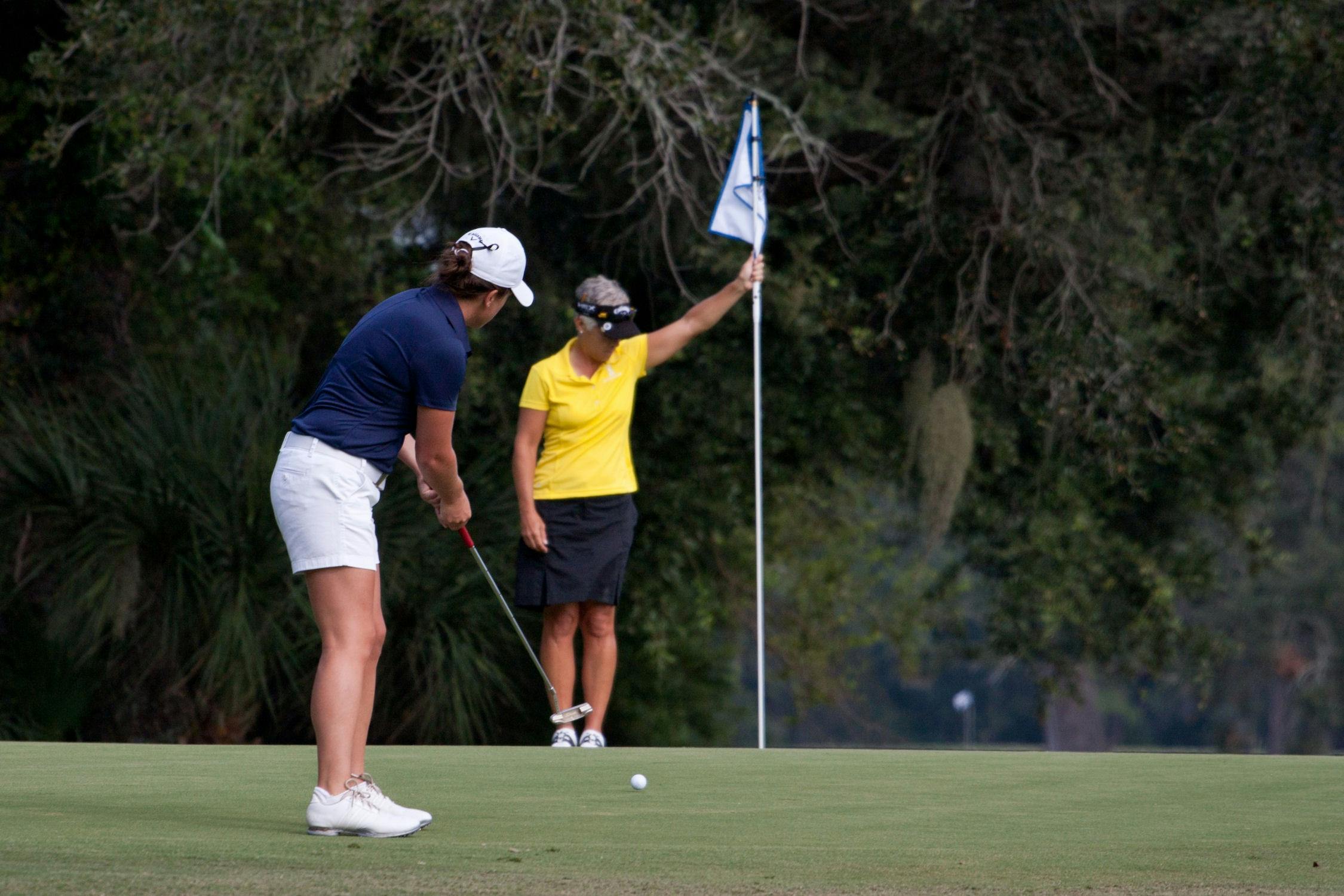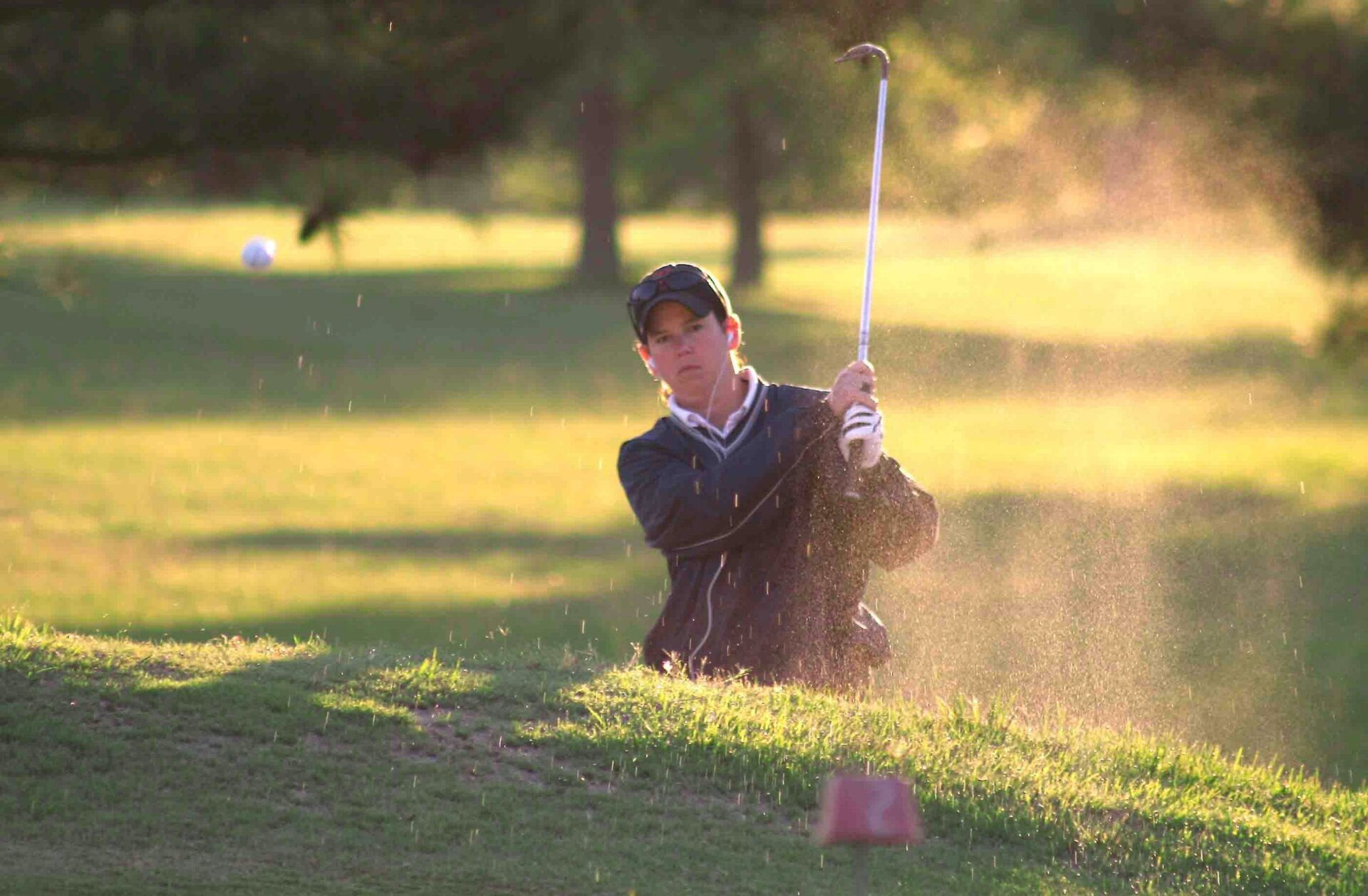Hitting behind the golf ball is one of the most common mistakes made by amateur golfers. It can have a disastrous effect on the accuracy and distance of your shots. Knowing why you are hitting behind the ball, and how to correct it, can help you make better, more consistent swings. This article will explain why you may be hitting behind the ball and what you can do to fix it.The cause of hitting behind the golf ball can be attributed to an incorrect setup and/or poor swing mechanics. When setting up to the golf ball, the weight should be slightly forward, with the hands and arms in front of the body. Additionally, it is important to make sure that the club is swung around the body and not across it. Poor swing mechanics can cause a golfer to swing too steeply or have an incorrect takeaway, resulting in a hit behind the ball.
Poor Setup Position
One of the most common reasons for hitting behind the golf ball is a poor setup position. If a golfer is not properly aligned and positioned at address, they will often find themselves striking the ground instead of the ball. Poor posture can lead to a shallow angle of attack, which can cause the club to enter the ground behind the ball instead of in front. Additionally, an incorrect grip can lead to poor contact. Improving setup position is key to hitting better shots and avoiding contact with the ground.
Lack of Arm Extension
Another issue that often causes golfers to hit behind the ball is a lack of arm extension. Keeping the arms too close to the body during a swing can create an overly steep angle of attack, leading to contact with the ground before reaching the ball. A proper arm extension through impact will help create a shallower angle and ensure that all contact with the club is made at or near the ball. Golfers should work on maintaining their arm extension throughout their swing in order to achieve solid contact.
Incorrect Ball Position
Another common mistake that leads to hitting behind the golf ball is an incorrect ball position. Placing tee shots too far back in your stance or having an iron shot too low in your stance can cause you to make contact with turf before reaching your intended target. Playing your shots from a consistent address position will help ensure that you are making solid contact with every shot and avoiding hitting behind it.
Shallow Angle Of Attack
A shallow angle of attack is another frequent cause for hitting behind the golf ball. If you are not making enough downward force on your swing, you may be causing your club head to enter into turf instead of making solid contact with your intended target. To avoid this, practice swinging down from inside-out and focusing on creating more dynamic force through impact in order to generate a steeper angle of attack and better contact with your golf shots.
Analyzing Your Swing Technique
It is important to analyze your own swing technique in order to improve your golf game. This can be done by taking video of yourself while swinging or by having a professional golf coach watch you and give you feedback. By analyzing your technique, you can identify areas of improvement, such as the angle of your wrists, the position of your spine, or the timing of your swing. Once you have identified areas for improvement, you can practice drills and exercises that will help you to make the necessary changes.
Practicing Drills
Practicing drills is an important part of improving your swing technique. There are many drills available that focus on different aspects of the swing such as grip, stance, backswing, downswing and follow-through. Practicing these drills regularly will help you to develop a consistent and repeatable swing that will lead to lower scores on the course.
Using Technology To Analyze Swing Technique
In recent years, technology has become a popular way for golfers to analyze their swing technique. Golf launch monitors are devices that measure ball speed, launch angle and spin rate which can be used to identify flaws in a golfer’s swing. Other technologies such as pressure mats and force plates measure the pressure put on different parts of the body during the golf swing, allowing for further analysis and feedback. By using these technologies, golfers can more easily identify areas for improvement and make necessary corrections in their technique.
Seeking Professional Help
If you are serious about improving your game then seeking professional help is often recommended. A professional coach can provide personalized feedback on your technique which will help to identify specific areas for improvement. They may also suggest drills or exercises tailored specifically to address any weaknesses in your technique that they observe during analysis. Ultimately having an experienced professional provide guidance is often very beneficial for improving one’s golf game and lower scores on the course.
The Impact of Incorrect Setup Position
Setting up correctly is one of the most important aspects in golf. If the setup position is incorrect, it can have a big impact on the swing, resulting in poor ball flight and poor shot results. It can also lead to problems with accuracy, as well as accuracy in distance control. In addition, incorrect setup position can cause excessive strain on the body, leading to injury.
A golfer’s setup position should be comfortable and correct for their size and strength. It is important to ensure that the feet are positioned correctly relative to the ball and that the body is in a balanced position. The arms should also be positioned correctly, with elbow angles that match those of the shoulders. All of these elements must be correct for optimal performance.
If a golfer’s setup position is incorrect, it will affect their swing plane and their ability to make solid contact with the ball. The club will not move on a proper path, leading to inaccurate shots. Poor distance control will also be an issue, as well as poor trajectory control – resulting in either too low or too high shots. This can make it difficult to hit fairways and greens consistently.
Incorrect setup position can also cause excessive strain on certain parts of the body due to its unnatural posture. This can lead to injury or strains from overuse and improper technique during the golf swing – especially if it isn’t corrected quickly enough or addressed properly.
Overall, it is important for golfers to ensure that their setup position is correct before they begin swinging at all times. This will help them perform better while also avoiding potential injuries due to incorrect technique or posture during their golf swings.
Adjusting Ball Position for Better Contact
One of the most important aspects of golf is understanding how to make contact with the golf ball correctly. The position of the ball in relation to your body makes a big difference in how it will be hit. Adjusting your ball position can help you make better contact and ultimately improve your game.
The best way to find the ideal ball position for you is to experiment by placing it in different locations when you practice. You should try different positions, such as moving it further forward or back, and higher or lower in your stance. This will give you a better idea of where your ball should be located for optimal contact with the clubface.
The location of the ball can also impact the trajectory of your shot and its direction. If it’s too far forward, you may hit a high shot that goes too far; if it’s too far back, you may hit a low shot that doesn’t travel as far. Experimentation is key to finding what works best for you.
Another factor that affects how well you make contact with the golf ball is the angle of attack. This is determined by your posture and swing plane, which should be adjusted accordingly based on where the ball is located in relation to your body. For example, if the ball is further forward than usual, then you should adjust your posture and swing plane accordingly so that your clubface makes square contact with the golf ball at impact.
In conclusion, adjusting your ball position can have a significant effect on how well you make contact with the golf ball and ultimately improve your game. Experimentation is key to finding what works best for you and making sure that your posture and swing plane are adjusted accordingly so that you can get maximum performance from every shot. With some practice and patience, you will soon find yourself hitting more consistent shots with greater accuracy and distance.

Understanding the Impact of Clubface Angle at Impact Point
The impact of the clubface angle at impact point plays a critical role in the outcome of a golf shot. It is important to understand how the clubface angle impacts the trajectory, spin, and distance of the golf ball. By understanding how different angles affect the golf ball, golfers can adjust their swing in order to maximize their performance.
The clubface angle refers to the angle between the leading edge of the club and its target line at impact. Generally speaking, a square or neutral clubface angle will produce a shot that travels straight towards its intended target. However, when hit with an open or closed face angle, shots will tend to curve more or less depending on how open or closed they are struck. Open face angles will produce shots that curve left (for right-handed golfers), while closed face angles will cause shots to curve right (for right-handed golfers).
The amount of spin imparted on a shot is also affected by clubface angle at impact. Open clubfaces impart more backspin on shots than square or closed faces, which helps them stay in the air longer and travel farther. Conversely, closed faces impart less backspin and cause shots to fly lower and shorter than expected.
Finally, understanding how different clubface angles affect distance is important for golfers who want to maximize their performance on each shot. Generally speaking, an open face angle produces more distance due to its ability to produce higher launch angles and increased backspin. On the other hand, a closed face angle produces less distance due to its ability to produce lower launch angles and decreased backspin.
In conclusion, understanding the impact of clubface angle at impact point is essential for any golfer who wants to optimize their performance on each shot. By adjusting their swing accordingly, golfers can ensure that they are making contact with their intended target line in order to maximize launch angles and spin rate for optimal results.
Checking Your Grip Pressure
Grip pressure is an important factor in a successful golf swing. Too little grip pressure will cause the club to slip in your hands, leading to ineffective shots, while too much grip pressure can lead to tension that can compromise your swing. The ideal grip pressure is firm, but not too tight. To check your grip pressure, try squeezing a golf ball with the same level of pressure you are using when gripping the club. If you feel any discomfort or tightness in your hand after a few seconds, then you are gripping the club too tightly. If the ball slips out of your hands, then you are most likely not gripping it tightly enough.
Checking Your Swing Path
Your swing path is crucial for making consistent and effective shots in golf. A good swing path will produce a straight shot with optimal backspin and distance, while an incorrect path can cause slicing or hooking of the ball. To check your swing path, practice swinging with alignment sticks or use a launch monitor to get visual feedback on your swings. The monitor will provide information about your angle of attack and club head speed that can help you adjust your swing accordingly. Additionally, practice swinging on the range and watch where the ball goes after impact – if it slices or hooks off-line then it’s likely due to an incorrect swing path.
Improving Your Posture
Good posture is essential for keeping your body healthy and strong. It helps to maintain balance, reduce fatigue, and prevent injury. Improving your posture can be done by focusing on your core muscles, stretching regularly, and being mindful of how you carry yourself throughout the day. Strengthening your abdominal, lower back, and gluteal muscles will help you to stand taller and straighter. Regular stretching sessions can also help to improve posture by increasing flexibility and mobility in the spine and joints. Additionally, being mindful of how you carry yourself can help to improve posture and prevent slouching or hunching over.
Weight Transfer
Weight transfer is an important aspect of proper body mechanics that can help reduce strain on different parts of the body. When transferring weight from one side of the body to the other, it should be done slowly and with control to prevent injury. The most important thing to keep in mind is that the weight should always be shifted towards the midline or center of gravity for balance and stability. Weight transfer can also be used when lifting objects or performing certain exercises; this helps to reduce strain on one side of the body while distributing it evenly over both sides for more efficient movement.

Conclusion
Hitting behind the golf ball is an important concept to understand in order to improve your golf game. Not only can it cause a mis-hit, it can also lead to a loss of distance and accuracy. To make sure you are striking the ball in the correct spot, practice with alignment sticks and tees and use video analysis to check your technique. With a consistent setup and swing path, you will be able to hit the ball consistently in the center of the clubface.
Remember that hitting behind the golf ball is all about consistency – if you practice regularly and focus on good technique, you will be able to hit solid shots more often than not. With patience and dedication, you should be able to hit better shots on a regular basis and enjoy playing golf more than ever before!




